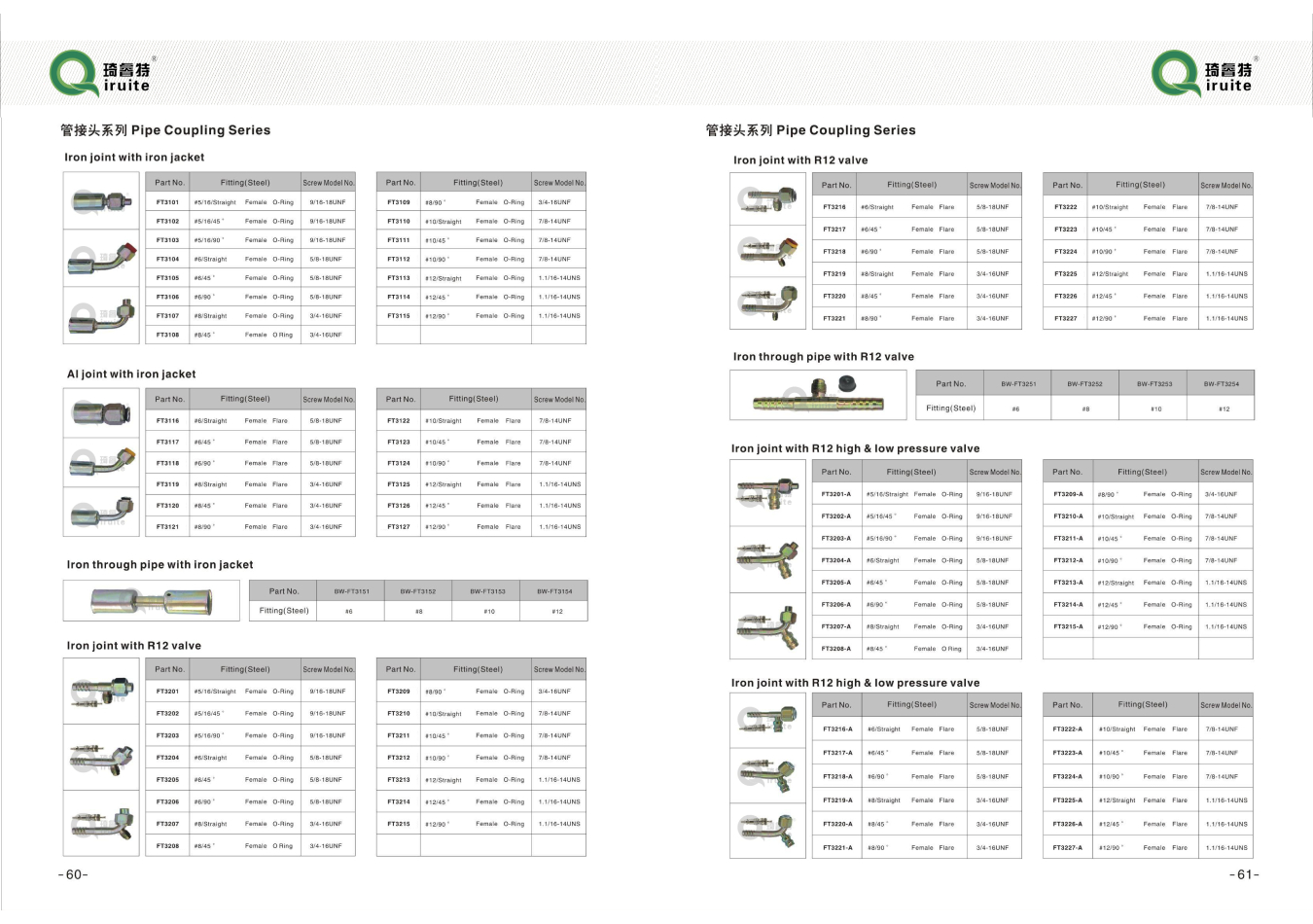brake hose car
Understanding Brake Hoses in Cars Importance and Maintenance
When it comes to vehicle safety, one of the critical yet often overlooked components is the brake hose. This essential element plays a pivotal role in the braking system of your car, ensuring that you can stop safely and effectively whenever necessary. Understanding the function, types, and maintenance of brake hoses can significantly contribute to your vehicle's overall performance and safety.
What is a Brake Hose?
A brake hose is a flexible tube that carries brake fluid from the master cylinder to the brake calipers or brake wheel cylinders. It is designed to withstand high pressure and temperature changes while remaining flexible enough to accommodate the movements of the vehicle's suspension. Typically made from reinforced rubber or other synthetic materials, brake hoses are crucial for transferring hydraulic pressure, allowing the brake system to function correctly.
Types of Brake Hoses
There are generally two types of brake hoses rubber hoses and stainless steel braided hoses.
1. Rubber Brake Hoses These are the most common type found in most vehicles. They are affordable, easy to install, and provide good performance under normal driving conditions. However, rubber hoses can degrade over time due to exposure to heat, ozone, and various automotive fluids.
2. Stainless Steel Braided Brake Hoses These hoses provide enhanced durability and better performance, especially in high-performance or racing applications. The steel braiding gives extra protection against wear and tear, allowing for greater pressure handling. Although they are more expensive than rubber hoses, many enthusiasts prefer them for their longevity and reduced chances of brake fade.
The Importance of Brake Hoses
brake hose car

Brake hoses are crucial for your vehicle’s braking system, acting as the lifeline for hydraulic pressure. Any compromise in the integrity of the hose can lead to brake failure, which poses severe risks not only to the driver but also to others on the road.
Signs of a failing brake hose include visible cracks, bulges, or leaks. If you notice any of these signs, it's imperative to address them immediately. Additionally, even if there are no visible signs, it’s recommended to replace rubber brake hoses every four to six years as a preventive measure.
Maintenance and Care
Maintaining your brake hoses is vital for ensuring your vehicle's safety and performance. Here are some tips for proper maintenance
1. Regular Inspections Check your brake hoses regularly for any signs of wear or damage. Look closely for cracks, fraying, or signs of leaks. If you see any irregularities, consider having them serviced by a professional.
2. Fluid Checks Ensure your brake fluid levels are consistent and without contamination. Old or contaminated fluid can lead to brake hose deterioration, compromising your braking system’s performance.
3. Professional Servicing Always schedule regular brake system check-ups with a qualified mechanic, especially if you drive in harsh conditions or use your vehicle for heavy towing or racing. Professional mechanics can offer insights into the condition of your brake hoses and recommend replacements when necessary.
Conclusion
In summary, brake hoses are an integral part of vehicle safety that demands attention from every car owner. Understanding the types, functions, and maintenance procedures can lead to better performance and enhanced safety. Remember, a well-maintained brake system not only ensures your safety but also enhances the longevity and reliability of your vehicle, making it an essential aspect of regular car care. Prioritize your brake hose maintenance, and you will drive with more confidence on the road.
-
Ultimate Spiral Protection for Hoses & CablesNewsJun.26,2025
-
The Ultimate Quick-Connect Solutions for Every NeedNewsJun.26,2025
-
SAE J1401 Brake Hose: Reliable Choice for Safe BrakingNewsJun.26,2025
-
Reliable J2064 A/C Hoses for Real-World Cooling NeedsNewsJun.26,2025
-
Heavy-Duty Sewer Jetting Hoses Built to LastNewsJun.26,2025
-
Fix Power Steering Tube Leaks Fast – Durable & Affordable SolutionNewsJun.26,2025

